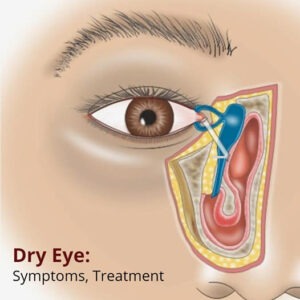 A child won’t raise their hand if they don’t know the answer to a problem, and that includes fuzzy vision. Most kids simply don’t realize if their sight is off. From tripping and tilting to picking the right lens, we’ve got a list of gotta-knows for parents aiming to keep their kids’ vision focused and healthy.
A child won’t raise their hand if they don’t know the answer to a problem, and that includes fuzzy vision. Most kids simply don’t realize if their sight is off. From tripping and tilting to picking the right lens, we’ve got a list of gotta-knows for parents aiming to keep their kids’ vision focused and healthy.
Want your kid to get straight A’s? A good way to start is with a clear “see.” A whopping 80% of a child’s learning1 comes through the eyes, yet 1 in 4 school-age children have a vision problem.2
That’s pretty simple math for equating how many kids are at risk of vision-related learning deficiencies, but often kids don’t even know something is wrong. It’s up to us parents to spot the signs of compromised eyesight, and to take the precautions against it.
Here’s a few tips and tricks to help your kid and their vision.
Screenings aren’t everything. In-school screenings may detect basic problems, but don’t count on one for a clean bill of vision health. If the screening detects an issue, see an eye doctor soon. A comprehensive eye exam can help gauge the overall health of the eyes, how they work together and other functions.2
Vision and behavior are often blurred. Because grades may suffer and behavior changes with degrading vision, children who have trouble seeing are often misdiagnosed with behavioral problems like Attention Deficit Hyperactivity Disorder.3 Before prescribing medications, Pearle Vision recommends taking notice if your child is holding books or other things unusually close or far away from their eyes . If he or she struggles, it may be time for an eye exam.
Reading, schmeading. If your kid hates to read, it may be because the letters are all mushed together or too fuzzy to detect, and this can lead to headaches, fatigue and lightheadedness. Another common sign of vision troubles is using a finger or pencil to guide the eyes while reading — even on social media. Swap out the reading for activities that sharpen vision skills, such as connect the dots or mazes to see how he or she does.
Make it routine. It’s recommended that by the time a child is 6 years old, she or he should have had 3 eye exams.4 We’re not judging here — the years do fly — but if not, you can make an eye exam a ritual by including 1 on your list of must-have school supplies and working it in with your back-to-school shopping.
Beware of tilt-a-words. Head tilting may look inquisitive and cute, but when a child makes a habit of doing so while reading, it could signal a potential vision problem. The same goes for kids who rub their eyes a lot or cover one eye while reading.3
Going “bump” into the night, and day. Clark Kent might be able to do super things without his glasses, but kids with vision problems can’t. If your child often bumps into desks, knocks things over and trips, he might not just be clumsy. See an eye doctor to help rule out vision problems before pulling out the first aid kit (again).
Computer vision syndrome is a thing. Yep, research suggests that heavy computer use among kids can lead to early myopia. This is because the computer forces the child to focus and strain more than many other tasks, which stresses the eyes. In addition to limiting computer time and regular eye exams, be sure the workstation is ergonomically suited to a littler body.4
See through their (scratch-free) lenses. Spend 20 minutes watching a playground and you’ll see why the lenses you pick matter when it comes to kids. Pearle Vision recommends opting for polycarbonate lenses – which are more lightweight and impact- and scratch-resistant than standard plastic lenses, and therefore more likely to take a hit or fall. And UV protection can further protect your kid’s eyes from the sun’s potentially harmful rays.4
If you want your kids to ace their classes this year, remember a good “see” can lead to straight A’s and — more importantly — a very happy child. Schedule a visit to the eye doctor as part of your back-to-school checklist.
- Signs & Symptoms of Learning-Related Vision Problems, College of Optometrists in Vision Development. https://www.covd.org/page/symptoms. 2021.
- Statistics on the Connections Between Vision and Learning, Greg Mischio. https://www.thevisiontherapycenter.com/discovering-vision-therapy/bid/69067/statistics-on-the-connections-between-vision-and-learning. 2021.
- Child Vision Problems in the Classroom, Staff Writers. https://www.accreditedschoolsonline.org/resources/child-vision-problems/. April 15, 2021.
- Vision Problems of School-Age Children, Greg Heiting, OD. https://www.allaboutvision.com/parents/schoolage.htm. April 2021.
 38, don’t think they need an eye exam if their vision is clear, according to American Optometric Associations’s (AOA) Eye-Q® Survey 2020. It’s time to turn belief into action: making a
38, don’t think they need an eye exam if their vision is clear, according to American Optometric Associations’s (AOA) Eye-Q® Survey 2020. It’s time to turn belief into action: making a  Dry eye is a chronic ailment that can happen to anyone, at any point in life. It is a syndrome commonly found in both men and women. It is a progressive condition where the eye loses the required amount of lubrication that is necessary for a healthy vision. This disease may or may not be completely cured, depending on the severity of the condition in a person. However, ophthalmologists state that in milder situations, patients are able to overcome many disturbing symptoms of dry eye and experience clearer vision and greater eye comfort with proper dry eye treatment.
Dry eye is a chronic ailment that can happen to anyone, at any point in life. It is a syndrome commonly found in both men and women. It is a progressive condition where the eye loses the required amount of lubrication that is necessary for a healthy vision. This disease may or may not be completely cured, depending on the severity of the condition in a person. However, ophthalmologists state that in milder situations, patients are able to overcome many disturbing symptoms of dry eye and experience clearer vision and greater eye comfort with proper dry eye treatment.

